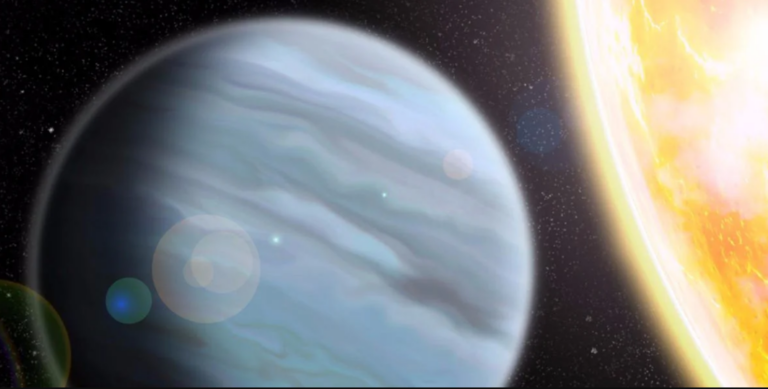Astronomers have found a peculiar planet that is unusually ‘puffy’ and has the density similar to styrofoam.
KELT-11b discovery team points out that the planet so bulgy is the third from the bottom in density scale among all known exoplanets that have the same mass and radius as known for it down to the dot. This peculiar space filled with this odd but weightless body could perhaps sever more logical gaps into the origin of these mysterious exoplanets. KELT-11b merely goes round its star that is about 320 lightyear distance from the Earth.
Joshua Pepper of Lehigh University, an astronomer, cites, “the gas giant with about a twenty percent of the mass of Jupiter, but it gets the size of about 40 percent more than its fellow planet, making the density of the moon close to the styrofoam, with the huge atmosphere in its exterior.”
As for planet KELT-11b the least only is the denseness, yet it is also included in the next because of shielded by the super-luminousness of host sun. The known star by the name of KELT-11 has begun its transformation into a big star which basically means the continued use of nuclear energy by fusing hydrogen in a shell that is located by the core.
As per current estimates, KELT-11b may be swallowed by its host star in about 100 million years. The outer layers will reach KELT-11’s surface at that time, thus engulfing Styrofoam-like planet.
Ir.7 closely follows its host, KELT-11, having the timescale of its engulfment less than five days, the process of engulfment also occurs fast.
Nevertheless, the KELT-11 proactive strategy of hunting its own planet will aid scientists know much more about its atmosphere’s chemical structure before its own engulfment occurs.
The fact that KELT-11b will be transiting between the Earth and this star as it revolves means that, despite our effort to do good and true to our charter, from Earth perspective star will appear to be somewhat fictitious.
Astronomers are normally able to detect exoplanets because there is a tiny dip in the amount of light space telescope receives from a star when it is its turn to be in front of the exoplanet and therefore block it.
Nevertheless, with KELT-11, the sub-giant’s extremely brightness made the data gathering process through KELT (Kilodegree Extremely Little Telescope) survey (consisting of two robotic telescopes located in Arizona and South Africa) to be complicated because of differences in brightness (with or without the transiting KELT-11b) to the magnitudes given
“It was the most complex find. The star displayed barely any light curve in the findings on the initial flash of KELT, which the team announced before a peer-review process.” Pepper said this to Nowakowski from Phys.org, when they are going to publish their developing paper.
“Because there was small variation in the light (about 0.3% change in brightness) as well as the long duration they were very challenging to get any convinces from the time of observation.”
After those data had been received and studied, there was the final proof of the existence of the planet Kelt-11b and now the harsh background lighting that made the world difficult to see initially would help scientists to know its materials which reflects their light. Thus can finding out how world of swollen polystyrene is shaped can be a sign of how it came simultaneously to become steadily distended.
Sharing the same characteristics of a fluffy peanut butter and jelly sandwich: close proximity and heft; ice cream flavor; KELT-11B size is currently an enigma scientists won’t understand. However, they offer a unique opportunity to study them and find out the reason for a collection of almost air planets that is massive and rare.
“KELT-11b is expected to be an experimental case that will assist us to understand the mechanism behind the growing of planets,” Pepper quoted Phys. org.
“In addition to the above, since the host star has undergone the evolution to sub-giant stage and is getting weary towards the end, we want to study the characteristics of planetary systems at the end-stage of the stars’ life span.”
This account is summarized in The Astronomical Journal.
Do not forget to share your opinion with us to provide you with the best posts !




0 Comments